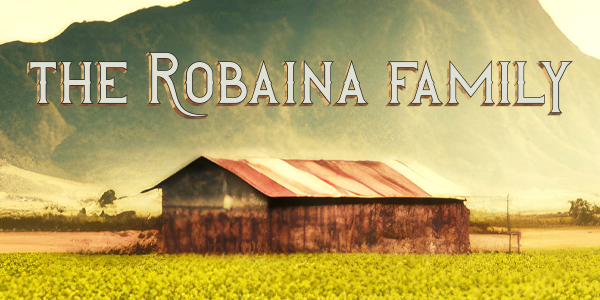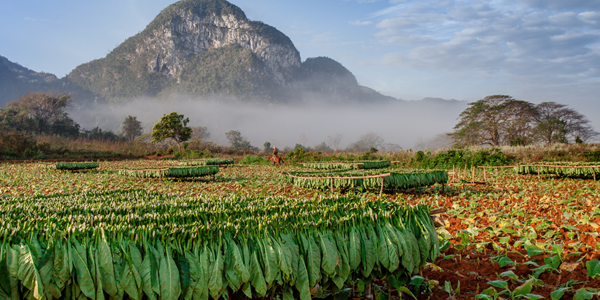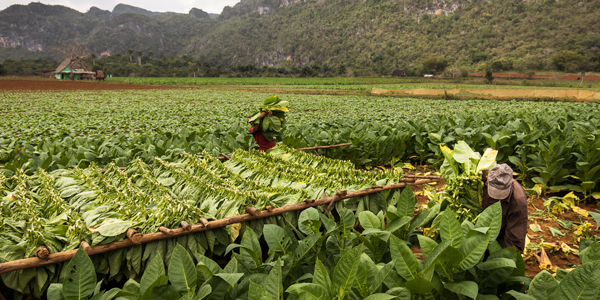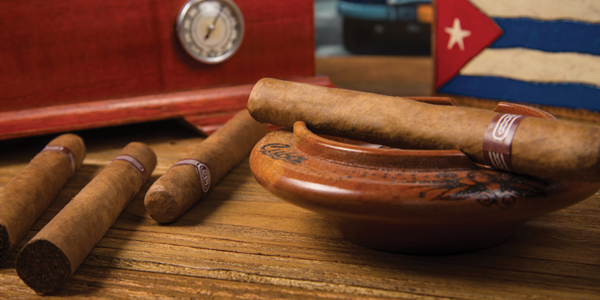The Robaina Family
When Hurricane Ian tore through Cuba’s famous Pinar del Rio province in Cuba in September of 2022, it made an apocalyptic mess of one of the most famous tobacco farms on the island: Cuchillas de Barbacoa, the legendary Robaina family plantation in the Vuelta Abajo region. Fortunately, no one was injured in the immediate vicinity, and the storm struck ahead of the planting season when maximum damage would have been inflicted on the crops. Although the destruction of tobacco barns and infrastructure was significant, perseverance is part of life when you farm premium tobaccos.
Alejandro Robaina – A Cuban Legend
Legendary Cuban tobacco farmer Alejandro Robaina passed away at the age of 91 in 2010, but beforehand he ensured the family’s legacy as growers of great tobacco would continue with his grandson, Hirochi Robaina, whom he had chosen and prepared years earlier to take over their small but historic 40-acre tobacco farm, known for producing superlative wrapper crops. Robaina wrapper leaves are found on some of Cuba’s most prestigious brands, including Cohiba and Hoyo de Monterrey.
Alejandro Robaina, with his deeply chiseled complexion and straw hat, came to symbolize Cuban tobacco around the world when Fidel Castro singled out his farm, in the mid-1990s, for growing the best tobacco in Cuba. Despite the accolade, Robaina was a steadfast advocate for independent farmers, who retained private ownership of their land, over the state-owned farms. Private farms, he believed, produced superior tobacco. Regardless of land ownership, the Cuban government remains the only customer for Cuban tobacco, and farmers sell roughly 90 percent of their yields to the state. The Robaina family began planting tobacco on their farm in 1845, and the land has been in the family ever since – for five generations. Before the Cuban Revolution, they sold their crops to American tobacco brokers, but began supplying the Cuban government in the 1960s with the other farmers who chose to stay on the island in the wake of Castro’s ascent.
A meticulous and demanding farmer, Alejandro Robaina was famous for not only growing superior crops but for achieving much higher yields than many other farmers in Vuelta Abajo. In particularly challenging years, he could produce yields of 80 percent while neighboring farmers settled for 10 or 20 percent. A yield refers to the number of wrapper leaves harvested and cured that meet the quality standards for going onto the finished cigars. The region is no stranger to difficult growing circumstances, including crop-destroying outbreaks of blue mold and black shank. During years of poor weather or planting new seed varietals that fail to perform, tobacco farmers are confronted with minimal yields, over which they have little control. When one wonders what makes Cuban cigars so special, it’s not simply that they’re illegal for purchase in the U.S. It has to do with the rarity of high-quality Cuban cigars. Because great growing seasons are never guaranteed in Cuba, some years the cigars are superb, and during others, they are mediocre at best.
Through it all, the Robainas have endured. Alejandro Robaina traveled the world as an ambassador, of sorts, for Cuba, and Cuban tobacco, on behalf of the government thanks to the honors bestowed on his growing operation by Castro. It is a role Hirochi Robaina proudly carries on.
The Robaina Farm Today
In the 2018 short documentary film, Prince of Smoke, viewers are invited on a raw and intimate tour of the Robainas’ tobacco farm. Verdant tobacco crops occupy nearly every frame of the film while the laborious and rugged work of farming in an economically challenged landscape is front and center as the camera follows Hirochi Robaina through his fields and curing barns. Old tractors, rusty equipment, and rudimentary structures, mixed with a handful of amenities, fill out the setting of this modern Cuban tobacco farm. Cigar enthusiasts will arrange to visit the farm, a roughly two-hour drive from Havana, and its popularity has led to the family turning tourists away, at times. Before Alejandro’s passing, neighboring farmers would impersonate him and offer tours of their fields to unsuspecting visitors.
Taking the Reins: Hirochi Robaina
Hirochi Robaina was drawn away from Havana, where he was born in May of 1976, by his grandfather who chose him, among eleven other offspring, to take over the farm due to his work ethic. Alejandro sent Hirochi to work in the Partagas and H. Upmann factories to train as a cigar roller beginning in 1995. Alejandro would send for Hirochi intermittently to work under him in the fields and to learn all he could impart about growing the best tobacco. Within a few years, Hirochi accompanied Alejandro on trips to Lebanon and Egypt.
Hirochi’s father, Carlos Robaina, was not in line to inherit the farm because a skin condition prevented him from working in the sun. Carlos works at the famous Casa del Habano at Fifth Avenue and 16th Street in Havana. Many other Robainas work in the cigar industry, both on and off the farm. And many family members and workers on the Robaina plantation doubted and tested Hirochi upon Alejandro’s passing. They questioned his decisions at every turn – to salt the fields following a period of heavy rain, or to fertilize the soil with ground peanuts, both of which are old-world techniques he learned from Alejandro.
More than a decade later, Hirochi has made his mark. Catastrophic weather, invasive tobacco mold, and the pressure of upholding the Robaina reputation has only emboldened Hirochi’s resolve. He is a much in-demand tobacco grower, in and outside of Cuba, but he professes would never leave Cuba to cash in on his name – although he has collaborated with cigar-makers in other countries at times. Because he had the advantage of absorbing his grandfather’s knowledge and wisdom, he humbly attests he’s had it much easier than the elder Alejandro ever did.







